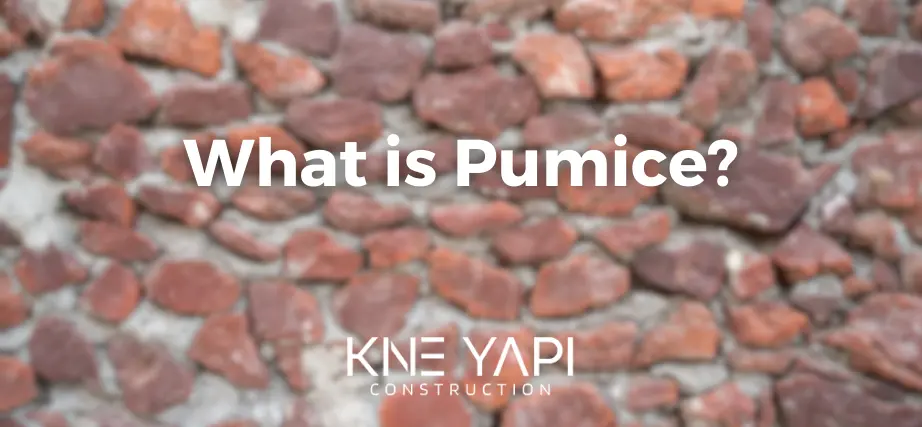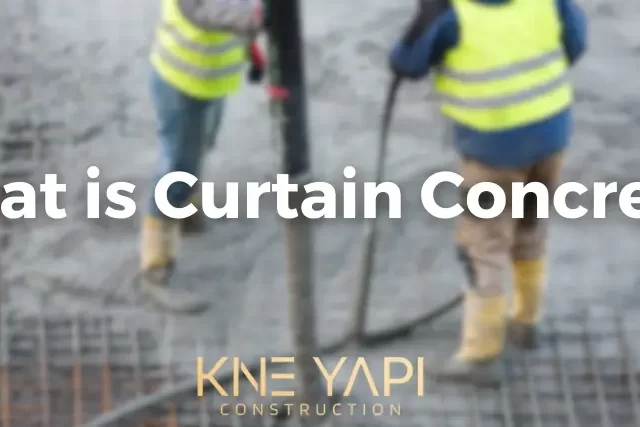
For those curious about what pumice is, today we will provide a detailed explanation to shed light on this topic. So, what is pumice? It is a lightweight and porous construction material. The main components of pumice are volcanic ash and basalt. This material is obtained by grinding volcanic glass that forms as a result of the cooling of lava at high temperatures. The pores in pumice’s structure give it its lightweight and insulating properties. Additionally, pumice is highly durable.
Pumice has a wide range of applications in the construction industry and is one of the most preferred construction materials. This is due to its lightweight nature and ease of workability. Moreover, pumice is fire-resistant and provides good sound insulation. These properties make pumice suitable for various types of structures, from residential buildings to commercial properties.
Visit us for our Cyprus real estate ads: Cyprus Real Estate
Properties of Pumice
The properties of pumice are significant factors that distinguish it from other construction materials. Firstly, its lightweight nature offers a significant advantage during the construction process. It makes transportation and assembly easier and does not add extra weight to the structure. Furthermore, the low density of pumice contributes to energy savings and does not impose an additional load on the building.
Another important feature of pumice is its insulation capability. The porous structure of pumice improves both thermal and sound insulation. Consequently, structures using pumice achieve better energy efficiency and are less affected by external noise.
Pumice is also known for its fire resistance. It can withstand high temperatures and inhibits the spread of fire. This feature ensures that pumice is a safe construction material.
Advantages of Pumice
Pumice offers several advantages. Firstly, its lightweight nature makes construction processes more efficient. Transportation and assembly are faster, leading to reduced labor costs.
Pumice also contributes to energy savings. Its porous structure prevents thermal bridges and the infiltration of outside hot or cold air. This, in turn, reduces heating and cooling expenses.
Additionally, pumice is environmentally friendly. It is produced using natural resources such as volcanic ash and basalt. Moreover, it is a recyclable material, reducing waste generation.
Another advantage of pumice is its durability. It can withstand high pressures and impacts, ensuring the longevity of structures.
Usage of Pumice in Construction
Pumice has a wide range of applications in the construction sector. It can be used in the form of pumice blocks or panels and is suitable for the construction of various structural elements, including walls, floors, and roofs.
Pumice blocks can be quickly and easily assembled. When used in wall construction, they reduce labor costs and expedite the construction process. Additionally, pumice walls provide effective sound insulation and enhance energy efficiency.
Pumice can also be used for insulation in reinforced concrete structures. Applying pumice panels to the exteriors of concrete buildings prevents thermal bridging and aids in energy conservation.
The use of pumice in construction is not limited to walls. Pumice roof panels are also a commonly preferred option. Due to their lightweight nature, they do not impose additional loads on roofs and are easy to install.
Pumice Insulation Applications
Pumice is frequently chosen as a material for insulation applications. Its porous structure improves thermal and sound insulation.
Pumice panels can be used on exterior or interior walls. When applied to the exterior, they prevent energy loss within the building and eliminate thermal bridging. Additionally, pumice panels enhance the aesthetic appearance of the building.
Pumice can also be used for ceiling insulation. Pumice panels applied to ceilings improve sound insulation and reduce noise in indoor spaces. This is particularly crucial in multi-story buildings.
One of the advantages of pumice in insulation applications is its fire resistance. Pumice panels inhibit the spread of fire and contribute to fire control.
Pumice in Garden and Landscape Use
Pumice can be utilized in garden and landscape design. Pumice blocks or panels are preferred materials for constructing garden walls or fences.
Pumice walls are an ideal choice for defining the boundaries of a garden. They are easy to assemble due to their lightweight nature and blend harmoniously with the environment. Moreover, pumice walls can be used to create planting areas.
Pumice can also be used in the construction of garden paths. Pumice stones provide an attractive appearance and enhance the durability of walkways. Additionally, pumice stones do not absorb water, preventing puddles after rainfall.
One of the ecological advantages of using pumice in gardens and landscapes is its environmentally friendly nature. Derived from natural sources, pumice is an eco-conscious choice that contributes to the preservation of natural habitats.
Pumice’s Role in Industry
Pumice plays a significant role in various industries. It is particularly preferred in the production of insulation materials and lightweight structural components.
Pumice panels can be applied to the exteriors or interiors of industrial buildings. These panels enhance energy efficiency and prevent thermal bridging. Additionally, they improve the visual appeal of industrial structures.
Pumice also excels in sound insulation. Pumice panels can be employed to reduce noise in industrial facilities, leading to improved working conditions and employee comfort.
Another industrial application is the use of pumice for lightweight structural elements. Pumice blocks or panels are favored options in large structures like factories or warehouses. Their lightweight nature facilitates transportation and assembly.
Pumice in Home Construction
Pumice is also widely used in home construction. Pumice blocks or panels can be applied in various structural elements, including walls, floors, and roofs.
Pumice walls can be quickly and easily erected in homes. They reduce labor costs and expedite construction. Additionally, pumice walls provide effective sound insulation and enhance energy efficiency.
Pumice can also be utilized in flooring. It improves sound insulation and prevents heat loss. Pumice’s lightweight nature ensures that it does not add extra load to the floor and provides a solid foundation for the structure.
Pumice roof panels are a preferred option in home construction. Their lightweight nature does not burden the roof, and they can be easily installed. Furthermore, pumice roof panels offer excellent insulation properties and contribute to energy savings.
Ecological Advantages of Pumice
Pumice boasts ecological advantages that make it an environmentally responsible choice. Produced from natural resources such as volcanic ash and basalt, pumice is an eco-friendly option.
The production of pumice consumes minimal energy. Additionally, it is a recyclable material, reducing waste generation. These characteristics make pumice an essential component of sustainable construction practices.
Another significant ecological advantage is pumice’s contribution to energy conservation. Its porous structure prevents thermal bridging and the infiltration of outside hot or cold air. Consequently, structures using pumice achieve better energy efficiency and reduce energy consumption.
Pumice also aids in the preservation of natural habitats. Derived from natural sources, pumice does not harm the environment or disrupt natural ecosystems.
Various Industrial Uses of Pumice
Pumice finds applications in different industries, not just construction. It is particularly favored in the production of insulation materials and lightweight structural components.
Pumice panels can be applied to the exteriors or interiors of industrial buildings. These panels enhance energy efficiency and prevent thermal bridging. Additionally, they improve the visual appeal of industrial structures.
Pumice also excels in sound insulation. Pumice panels can be employed to reduce noise in industrial facilities, leading to improved





Leave a Reply